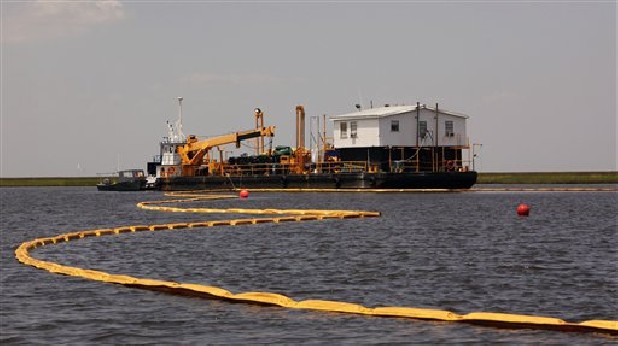WASHINGTON - Halliburton Energy Services has agreed to plead guilty to destroying evidence in connection with the 2010 Gulf oil spill, the Department of Justice said Thursday.
Federal officials said in a news release that a criminal information charging Hallburton with one count of destruction of evidence was filed in federal court in Louisiana.
Halliburton has agreed to pay the maximum fine, be on probation for three years and continue to cooperate with the government's criminal investigation, said the news release, which did not spell out the fine amount.
The Houston-based company has also made a $55 million voluntary contribution to the National Fish and Wildlife Foundation. It was not a condition of the court agreement, the news release says.
Halliburton was BP's cement contractor on the drilling rig that exploded in the Gulf of Mexico in 2010. The blowout triggered an explosion that killed 11 workers and spilled millions of gallons of oil into the Gulf.
According to the news release, Halliburton conducted its own review of technical aspects of the well's design and construction. It also established "an internal working group to examine the Macondo well blowout, including whether the number of centralizers used on the final production casing could have contributed to the blowout."
A production casing is a long, heavy metal pipe set across the area of the oil and natural gas reservoir, the news release said.
Around May 2010, the company directed a program manager "to run two computer simulations of the Macondo well final cementing job using Halliburton's Displace 3D simulation program to compare the impact of using six versus 21 centralizers," the news release said.
Halliburton had recommended to BP the use of 21 centralizers in the well, but BP decided to use six instead, the news release said.
The simulations indicated there was little difference between using six and 21 centralizers, but the program manager "was directed to, and did, destroy these results," federal officials say.
Similar evidence was destroyed in a subsequent incident, in June 2010, the Justice Department said.
"Efforts to forensically recover the original destroyed Displace 3D computer simulations during ensuing civil litigation and federal criminal investigation by the Deepwater Horizon Task Force were unsuccessful," the news release said. "In agreeing to plead guilty, Halliburton has accepted criminal responsibility for destroying the aforementioned evidence."
The plea agreement and criminal charge both arise from a criminal investigation being conducted by the Deepwater Horizon Task Force into the spill.
Halliburton and BP have blamed each other for the failure of the cement job to seal the Macondo well. During a trial this past spring, BP asked a federal judge to sanction Halliburton for allegedly destroying evidence about the role that its cement slurry design could have played in the blowout.
The company announced in April it was trying to negotiate a settlement over its role in the disaster.

